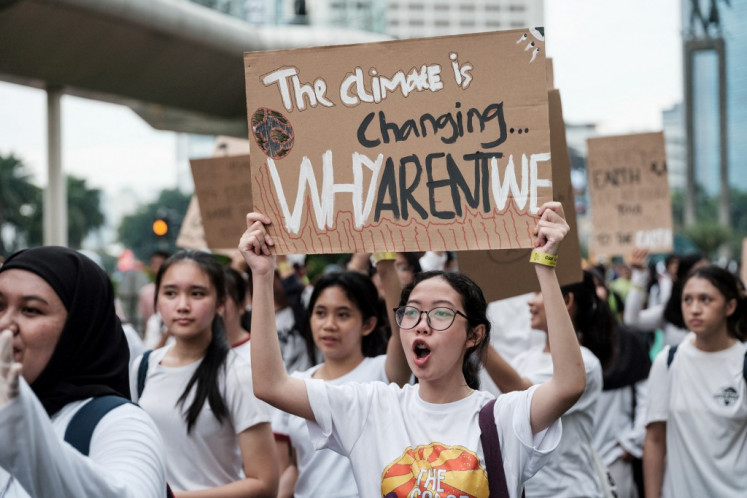PVMBG urges Independence Day revelers to avoid active volcanoes
The Volcanic and Geological Disaster Mitigation Center (PVMBG) recommends against August 17 Independence Day celebrations on 12 volcanoes due to increases in volcanic activity
Change Size

T
he Volcanic and Geological Disaster Mitigation Center (PVMBG) recommends against August 17 Independence Day celebrations on 12 volcanoes due to increases in volcanic activity.
Agus Budianto, a PVMBG official in charge of monitoring volcanoes, said 12 of the 68 volcanoes being watched would be poor sites for celebrating Indonesia’s anniversary.
“We cannot ban [celebrations]. What we can do is to recommend against activities on those mountains, which carry level two or level three warning statuses,” Agus said in Bandung on Monday.
The 12 mountains include Marapi, Dempo in Sumatra, Anak Krakatau in Sunda Strait, Papandayan, Semeru and Bromo in Java, Soputan, Lokon, Karang Etang, Ibu, and Dukono in Sulawesi and Gamalama in North Maluku. Mount Semeru, the tallest mountain in Java currently under level two status, has become the spot of choice for wildlife lovers. They are still allowed to go to the mountain, but Agus says they cannot go farther than the Kalimati monitoring post.
“It is still shooting balls of lava a radius of 3 kilometers. We received reports from climbers in June that they had to lay flat on the ground to avoid the burning balls,” Agus said.
Indonesia is precariously located where several tectonic plates collide and is topped with a chain of fire-breathing volcanoes.
Pyroclastic emissions from Merapi in September last year killed some 300 people in Yogyakarta and Central Java.
Volcanic activity in Marapi in West Sumatra, Lokon and Soputan in North Sulawesi and Papandayan in West Java have recently increased.
Agus said the PVMBG had sent a team to reevaluate Papandayan’s status. “[Papandayan’s] activity has begun to decrease again, but we need to look further into it. That’s why we have sent a team there,” he said.
Agus said the increase in volcanic activity was marked by a rise in temperature around the crater, which can reach over 300 degrees Celsius.
Cracks on the surface spewing as much as 100 parts per million (ppm) of carbon dioxide signifies an escalation in activity, according to Agus.
Despite the decrease in activity, the PVMBG has told people to stay at least 2 kilometers away from the crater.
Separately, Mount Soputan continued erupting following its second eruption at 9:27 a.m. local time on Sunday.
“The first eruption came at 7:55 a.m. before stopping. Several hours later, the second eruption came and continued to 9:50 p.m.,” Sandy Manengkey, head of the mountain’s monitoring post in Maliku village, South Minahasa regency, said in Tomohon on Sunday as reported by Antara news agency.
He said the volcanic material produced by the volcano consisted only of ash and no glowing lava. It was blown toward the west and was estimated to fall in Amurang.
“The strongest eruption reached 1,000 and was sent west from the cauldron,” he said.
He said the eruption was without hot clouds and that the villages were still safe, as they were rather far from the mountain’s crater.









